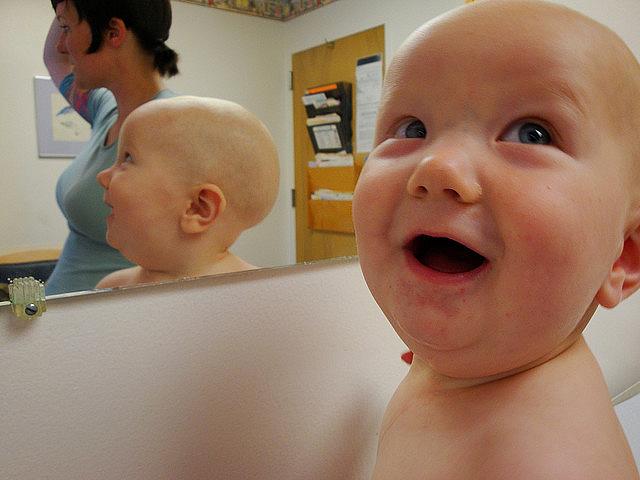Medicare bill’s passage throws lifeline to children’s health insurance

On Tuesday night, the headlines trumpeted the Senate’s much-anticipated passing of a bill that changes how Medicare pays doctors and prevents drastic payment cuts that would’ve kicked in later this week.
Taking second fiddle to that lead was the news that the bill’s 92-to-8 passage also guaranteed the Children’s Health Insurance Program (CHIP) two more years, through 2017. That’s not the four-year funding extension Democrats hoped for, but it does provide a bit of breathing room — and budget clarity for states — for a program supporters say is critical for ensuring low-income kids receive needed care.
Folks at Georgetown University’s Center for Children and Families, ardent supporters of the federal-state program, were in a celebratory mood Tuesday evening. The center’s Elisabeth Wright Burak wrote:
This agreement — a bipartisan, clean CHIP extension — was never a given, even though we knew that kids would be worse off otherwise. Is it perfect? No — a longer extension would be preferable… But recall that not even two months ago we were all staring at another CHIP proposal that would have extended CHIP, but with damaging changes to the structure of children’s coverage that would have threatened its very success.
The subtext here is clear: In this Congress, where bipartisanship has hovered on the brink of extinction, a straight two-year extension counts as a big win for kids.
But why does CHIP matter so much, especially in a world where the Affordable Care Act has dramatically extended coverage — via Medicaid and subsidies on exchange plans — to low-income families? I’ve written on this question before, but a brief summary may be useful.
Simply put, CHIP programs tend to have more generous benefits and require fewer out-of-pocket costs for low-income families. If cash-strapped parents face higher out-of-pocket costs and cost sharing, it might lead them to postpone or avoid getting their kids needed care. That’s part of a broader problem known as “underinsurance,” which is particularly prevalent in plans with high-deductibles and co-pays (i.e. “bronze” plans).
To take but one number: CHIP plans have an actuarial value above 90 percent, meaning that the program tends to cover more than 90 percent of health care costs. By comparison, “gold” plans on the exchange have an actuarial value of 80 percent, whereas “platinum” plans hit 90 percent.
CHIP covers a fuller range of benefits and services than some ACA plans, which can be particularly important for children who have developmental or learning disabilities. That lack of coverage in some states’ plans can have big consequences, as Aaron E. Carroll explained in the New York Times:
Part of the problem is that many assume that children are just 'little adults.' This is far from the truth. Because children are growing, services aimed at fixing developmental delays and problems that might seem nonmedical to adults are essential in making sure that kids advance. Some treatments that are not curative are still needed in order to help children develop well and learn to live with disabilities. Failing to meet the social and behavioral needs of children can have lifelong effects.
This week gave children’s health advocates two more years to think about what a longer-term answer to meeting the unique health needs of kids might look like.
Related posts
Kids' health insurance program faces crucial test this year
'Family glitch' can leave kids without affordable health coverage
Photo by eyeliam via Flickr.

